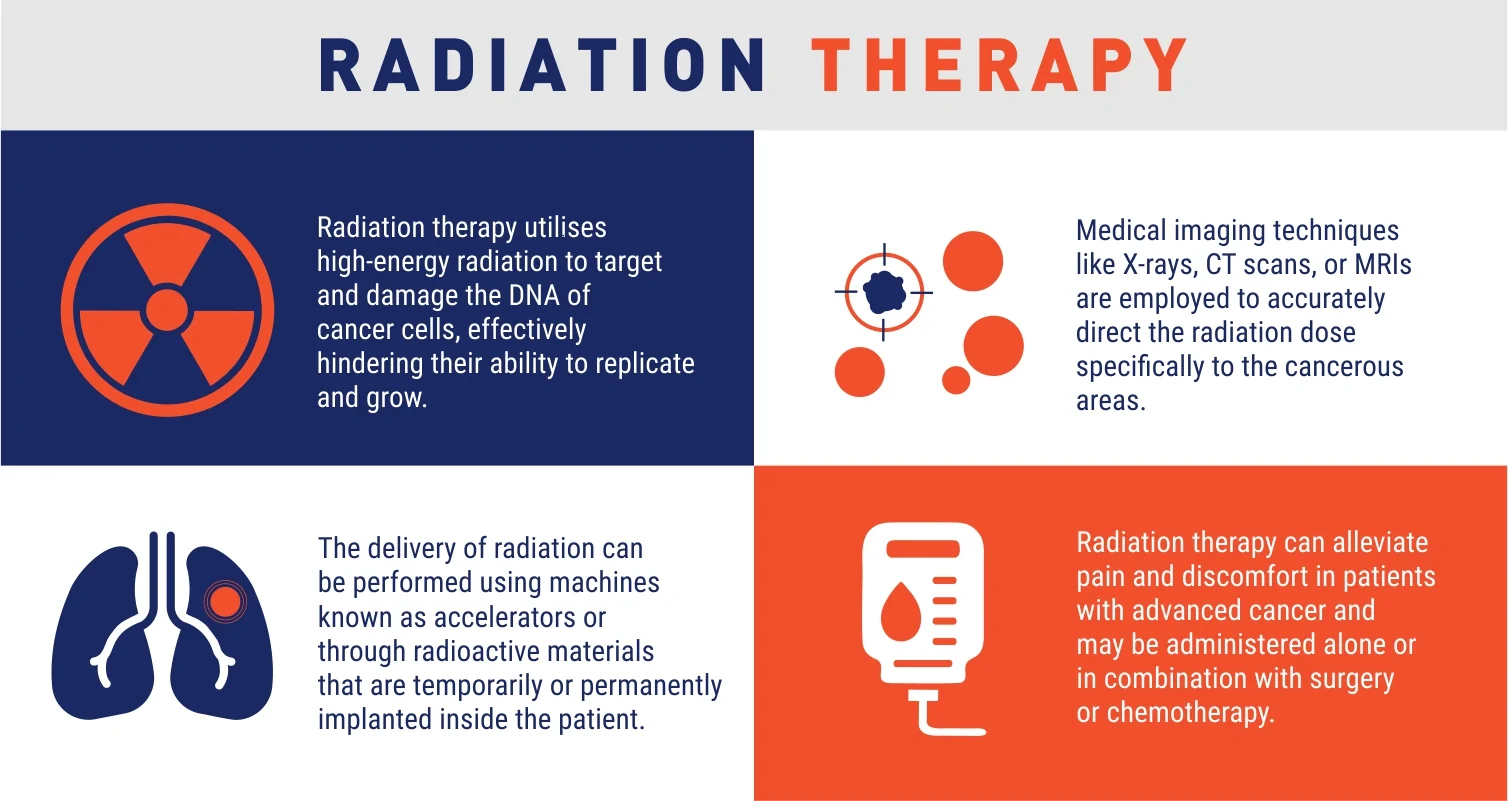
The Advancements in Radiation Oncology Techniques to Minimising Side Effects
Radiation oncology plays a pivotal role in the treatment of various cancers, employing precise radiation to destroy cancer cells. Despite its effectiveness, the pursuit to minimise side effects associated with radiation therapy remains at the forefront of oncological science. This blog explores how recent advancements in radiation oncology techniques are enhancing patient safety and comfort.
Oncology Radiation Therapy and its Side Effects
Radiation therapy, the foundation stone in cancer treatment, can unfortunately lead to side effects such as skin changes, fatigue, and others depending on the treatment area. These radiation oncology side effects stem from damage to normal cells near treatment zones. Understanding these adverse effects is crucial for developing strategies to reduce them.
Evolution of Radiation Oncology Techniques
The field of radiation oncology has evolved significantly, moving from fundamental radioactive sources to sophisticated machines that deliver precise radiation doses. This evolution has been primarily driven by the goal to reduce radiation oncology side effects and improve tumour targeting.
Modern Techniques in Radiation Oncology
Recent innovations in radiation oncology aim to refine the precision and efficacy of cancer radiation treatment. Techniques such as Intensity-Modulated Radiation Therapy (IMRT) and Proton Therapy allow oncologists to sculpt radiation doses to conform to tumour shapes, significantly protecting surrounding healthy tissue.
The Role of Technology and Imaging
Advanced imaging technologies like CT and MRI play essential roles in modern radiation oncology. These tools enable clinicians to visualise tumours precisely and adjust radiation beams in real-time, reducing unnecessary exposure and focusing on the malignancy.
Personalised Radiation Therapy Approaches
Personalisation in radiation therapy adapts treatment to individual patient characteristics, enhancing efficacy and reducing side effects. Genetic profiling and advanced simulation are among the methods used to customise treatments.

Patient Support and Side Effect Management
Supporting patients through their treatment journey involves comprehensive management strategies for radiation oncology side effects. Nutritional support, skin care regimens, and psychological counselling are integral to holistic patient care.
Future Directions in Radiation Oncology
The future of radiation oncology lies in the integration of artificial intelligence and machine learning with treatment planning and delivery. These technologies promise even greater precision and adaptability in radiation therapy protocols.
As we advance, the focus of radiation oncology continues to shift not only to effective cancer eradication but also to an enhanced quality of life through minimised side effects. The integration of cutting-edge techniques and personalised approaches is setting a new standard in cancer care.
Advancements in radiotherapy and oncology have significantly improved the outcomes for patients undergoing radiotherapy for cancer. These developments are crucial as they not only enhance the effectiveness of treatments but also minimise potential side effects associated with radiation. The integration of precise imaging and modernistic technology in radiotherapy and oncology has revolutionised how therapists target cancerous cells, sparing more of the healthy tissue surrounding tumours. This precision ensures that radiotherapy for cancer is more efficient and less invasive, representing a leap forward in oncological care.
Are you or a loved one facing a cancer diagnosis? Embrace the future of cancer treatment with confidence by consulting with specialists who are at the forefront of advanced radiation oncology techniques. Reach out today to learn more about how these innovations can benefit you.


